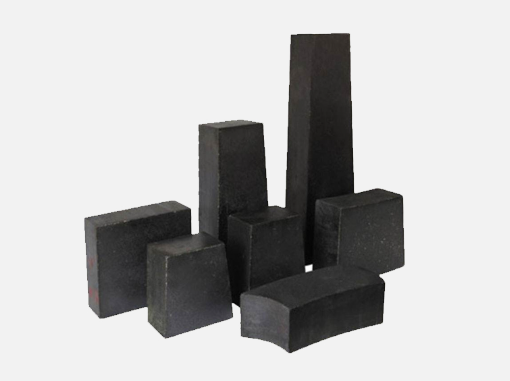Magnesium carbon brick brick to pay attention to what?
Posted time:2022-12-28 Page view:21120Magnesia carbon brick brick making process is more complex, rarely used, there are burned oil immersed magnesia carbon brick and not burned magnesia carbon brick two brick methods, the following to share magnesia carbon brick brick need to pay attention to what?
1. Preparation of mud
The selection of critical particle size is important when breeding. The fine aggregate particles can reduce the porosity of the opening and enhance the antioxidant capacity. However, small aggregate particles will increase the porosity and decrease the volume density. In addition, fine-grained MgO aggregates are easy to react with graphite, and it is generally considered that the particle size of 1mm is appropriate. Under the condition of high pressure molding equipment, the particles of magnesia tend to be fine. The pressure of molding equipment in China is low, in order to improve the density of refractory bricks, many manufacturers use 5mm or more particle diameter.
2, the quality and quantity of graphite added to the ingredients are crucial
Generally speaking, increasing the graphite content in the refractory brick, the slag resistance and thermal shock stability of the refractory brick will be improved, but the strength and oxidation resistance will be reduced, if the carbon content in the magnesia carbon brick is too small (<10%), the refractory brick can not form a network skeleton, then the advantages of carbon can not be effectively played. Therefore, the carbon content is more appropriate in the range of 10-20%.
3, feeding time sequence
In the mixing process, in order to make the graphite evenly surrounded around the magnesia particles, the feeding sequence should be: magnesia particles → bonding agent → graphite → magnesia fine powder and additive powder. Because the graphite content is large, the density is small, the added dose is very small, it takes a long time to mix evenly, but the mixing time is too long and it is easy to make the graphite and fine powder around the magnesia particles fall off, so the mixing time should be appropriate.
4, non-slip treatment
The forming of magnesia carbon brick is an important factor for the densification of the structure of refractory brick: because the amount of graphite in the mud is large and the critical particle of aggregate is small, it is appropriate to use high pressure molding and press strictly in accordance with the operating procedures of light and heavy first and pressure many times to avoid forming cracks. Better use of vacuum, exhaust pressure operating procedures. In addition, the surface of the high-pressure molded brick is very smooth, easy to slide when handling and building, so the molded brick should be impregnated or smeared with 0.12mm thick hot hardening resin to form a resin film to prevent sliding. This treatment is generally referred to as non-slip treatment.
5, hardening treatment
The molded magnesia carbon brick must be hardened before it can be used. The temperature of the hardening treatment has a great influence on the performance of the refractory brick. Studies have proved that 200 to 250℃ hardening treatment is more appropriate, for ensuring the bulk density of bricks, reducing porosity, etc., higher than 250℃ and lower than 200℃, hardening treatment will bring adverse effects. We must strictly control the air. Usually at 50-60 ° C, due to resin softening, should be properly insulated; At 100-110 ℃, due to a large amount of solvent discharge, should be insulated; At 200-250 ° C, in order to make the reaction complete, it should also be properly insulated.

